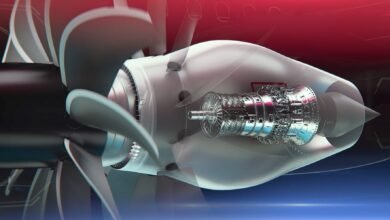The Marvelous World of トランスアクスルassy: A Deep Dive into Transaxles

So, you’ve found yourself knee-deep in the fascinating world of automotive mechanics, and you’re bumping into a term that seems straight out of a sci-fi novel: トランスアクスルassy. If you’re scratching your head, don’t worry—you’re not alone! Whether you’re a seasoned mechanic or just a curious car enthusiast, understanding transaxles can seem like cracking a secret code. But fear not! In this guide, we’ll demystify the トランスアクスルassy and break down everything you need to know about this critical automotive component.
What Is トランスアクスルassy?
Unpacking the Term
The term トランスアクスルassy might sound like a mouthful, but it’s a straightforward concept once you get to know it. “トランスアクスル” is the Japanese term for “transaxle,” which is a combination of the transmission and axle in a single unit. The “assy” part is short for “assembly,” indicating a complete, integrated component. Essentially, a トランスアクスルassy combines the functions of both the transmission and differential, making it a vital part of many modern vehicles.
Why It Matters
In automotive design, the transaxle plays a crucial role in delivering power from the engine to the wheels. It allows for smooth gear changes, helps in efficient power distribution, and plays a key role in vehicle handling. By integrating the transmission and differential, the トランスアクスルassy helps reduce weight and improve the balance of the vehicle.
Key Components of a トランスアクスルassy
The Transmission
Think of the transmission as the brain of the トランスアクスルassy. It’s responsible for shifting gears, which regulate the power output of the engine. Whether you’re cruising on the highway or accelerating from a stop, the transmission adjusts the gear ratios to ensure optimal performance.
The Differential
The differential is like the unsung hero in the トランスアクスルassy. It distributes the engine power to the wheels, allowing them to rotate at different speeds. This is crucial for smooth turns and handling. Without a differential, your car would struggle with uneven tire wear and handling issues.
The Axle
The axle connects the wheels to the トランスアクスルassy and is essential for transmitting the engine’s power to the wheels. It supports the weight of the vehicle and helps in maintaining stability.
Benefits of a トランスアクスルassy
Compact Design
One of the major advantages of a トランスアクスルassy is its compact design. Combining the transmission and differential into one unit saves space and reduces the overall weight of the vehicle. This not only improves fuel efficiency but also enhances handling.
Improved Handling
With the トランスアクスルassy, weight distribution is more balanced. This leads to better handling, especially in high-performance vehicles. The integrated design allows for more precise control and a smoother driving experience.
Enhanced Performance
A トランスアクスルassy can contribute to improved acceleration and responsiveness. Because it’s designed to handle both transmission and differential functions, it can provide a more seamless transfer of power to the wheels.
Common Issues and Maintenance Tips
Common Issues
Even though トランスアクスルassy units are designed to be durable, they’re not immune to problems. Some common issues include:
- Leaking Fluids: Over time, seals and gaskets can wear out, leading to fluid leaks.
- Overheating: Excessive heat can cause the トランスアクスルassy to malfunction, affecting performance.
- Gear Slippage: Problems with the gears can lead to slipping or difficulty in shifting.
Maintenance Tips
To keep your トランスアクスルassy in top shape, follow these maintenance tips:
- Regular Fluid Checks: Make sure to check and replace the transmission fluid regularly.
- Keep It Clean: Regularly clean the area around the トランスアクスルassy to prevent debris buildup.
- Listen for Unusual Noises: Pay attention to any strange noises while driving, as they could indicate issues.
FAQs About トランスアクスルassy
What does トランスアクスルassy mean in English?
トランスアクスルassy translates to “transaxle assembly” in English. It refers to the integrated unit that combines the transmission and differential.
How often should I service my トランスアクスルassy?
It’s a good idea to check the トランスアクスルassy fluid at least once a year or according to your vehicle’s service schedule. Regular maintenance helps prevent major issues.
Can I drive a car with a faulty トランスアクスルassy?
It’s not advisable to drive with a faulty トランスアクスルassy. Continuing to drive with issues can lead to more severe damage and safety hazards.
How can I tell if my トランスアクスルassy needs replacing?
Common signs that your トランスアクスルassy may need replacing include strange noises, difficulty shifting gears, and fluid leaks. If you notice any of these issues, it’s best to have it inspected by a professional.
Conclusion
The トランスアクスルassy might sound like automotive jargon, but it’s a crucial component that keeps your vehicle running smoothly. By understanding its role and maintaining it properly, you can ensure that your car delivers top-notch performance and handling. So next time you hear about トランスアクスルassy, you’ll know exactly what’s under the hood!
There you have it—a comprehensive guide to the enigmatic トランスアクスルassy! If you’ve got more questions or need further clarification, feel free to drop a comment. Safe driving and happy wrenching!



